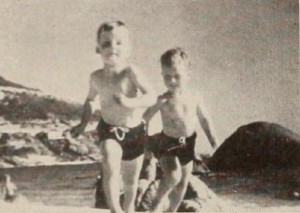
"From Capetown, South Africa, comes Help Yourselves, Boys!, by Lewis Lewis, a charming record of two handsome youngsters and their father engaged in planting, growing and harvesting zinnias. Using many effective angles and double exposed titles, Mr. Lewis relates a plausible tale of his boys raiding the grape arbor, being caught, and finally having their exuberance turned toward flower growing. Since the newly hatched garden is situated close to the ocean, the scenic backgrounds are startling as well as pleasant. Rich, black earth and flaming orange zinnias provide an attractive setting for an engaging family movie." Movie Makers, Dec. 1947, 538.
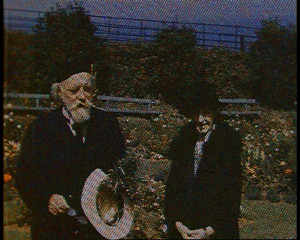
"A short colour film recording a visit to a garden in Llandudno" (EAFA Database).
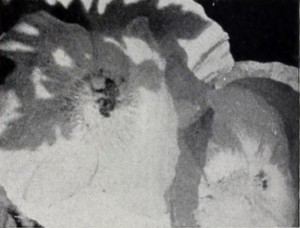
"As an openly avowed disciple of Herman Bartel, one of the old masters of nature filming, Martin E. Drayson has been an ably and imaginative pupil. Seldom have individual scenes of such delicate beauty as his poured across the screen of personal movies. Interlude in Sunlight, like Mr. Bartel's work in Awakening or Pathetique, is essentially an effort to interpret, in cinematic imagery, compositions of music. As such, it is divided into three sections or movements, comprised pictorially of bees, flowing water and flowers. The musical scores which these interpret are Paganini's Moto Perpetuo, Massenet's Meditation from Thais, and Johann Strauss's Wiener Blut waltzes. Preceding these pieces (during the lead title assembly) and between the several sections, Mr. Drayson has elected the use of complete silence." Movie Makers, Dec. 1945, 496.
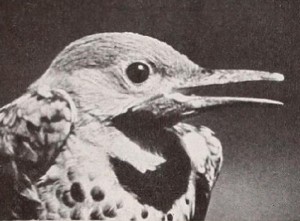
"Henry E. Hird offers the framework of a timely continuity plan for a scientific record in A Letter. A naturalist father writes a film letter to his sailor son who shares the father's scientific interest in bird and insect life, as well as in floral beauty. We see the father writing and the son reading a letter, the information in which is brought to life in film. Mr. Hird is a very capable observer and movie maker, and the combination of these abilities has enabled him to offer, in this informal style, a wealth of information. Extraordinary sequences of nesting birds are included." Movie Makers, Dec. 1943, 477.
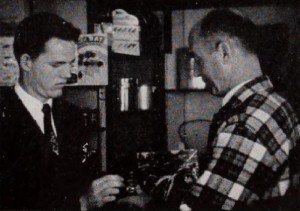
"May Day Conflict is a well executed and skillfully edited family story film of the conflict created by the opening of the trout season and a flower festival both falling on May first. The central character is a good loser (the husband, of course!), as he accompanies his wife to the flower show after elaborate preparations for his fishing trip. Herbert F. Sturdy has deftly woven into the story pattern light, humorous incidents to provide amusing comedy relief from his fine floral closeup studies. Expert camera handling and smooth transitions lend a semi-professional finish to the picture." Movie Makers, Dec. 1948, 493-494.
"Film of members of the Toronto Movie Club filming fruit tree blossoms and scenery at the Woodley family property at West Hill." Library and Archives Canada.
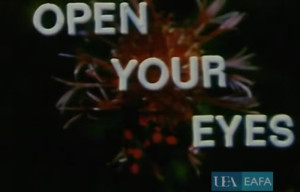
'Amateur filmmaker Dorothy Maxey observes the wildlife in her native Norfolk capturing on Super 8 film a variety of interesting flora and fauna, including at Thompson Common where ponies wade into the pingos and steal the heads from the water violets, and in her own back garden stumbling across wrestling toads. The filmmaker also recalls a story of nursing a poorly mouse following a frosty night by returning home with it to kindly warm him up under the oven grill' (EAFA.org.uk)
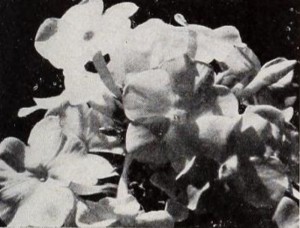
"Revelation indeed reveals the slow, but intense, life of flowers as they unfold. Hans J. Theiler, who built a special mechanism for the purpose, has made time lapse studies of blooms in their determined efforts to find sunlight. Other flowers lose as well as open. The time lapse sequences are preceded by closeup footage of various blooms impeccably filmed. In the chief section of the picture, Mr. Theiler has caught very dextrously the unusual and almost terrifying performances of plants as they carry on their exceedingly active careers. The time lapses are exceptionally smooth." Movie Makers, Dec. 1944, 496.
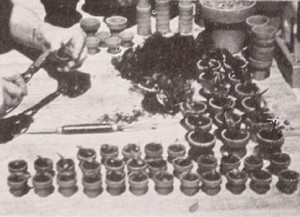
"A. M. Zinner has performed not only a labor of love in Romance of the Hybrid Orchid, but he has made an important contribution to the available information about orchid growing. Given the run of Shaw's Garden, the famous botanical park of St. Louis, he has traced the life of hybrid orchids from seed to full flowering, with especial study of the behind the scenes events in the hot beds and potting rooms. Outstanding is the section of the film devoted to the care and exact technique that must be used in handling seeds while they germinate. With this work of several years, Mr. Zinner takes his place in the ranks of significant amateur naturalists who have provided exhaustive records of some special field. In offering his carefully planned and detailed footage, Mr. Zinner also gives some very lovely flower pictures, including the rarest of the world's orchids. Beautiful camera work and expert sequencing mark the picture." Movie Makers, Dec. 1943, 474.
"The rose, a young girl, so proper, and so elegant in her royal dress, jewelry and jeweled crown. The weed, also a lovely girl, simply dressed and scorned by the rose. By scissors the rose is cut and its petals picked away to the delight of the weed, but then a gloved hand pulls the weed and leaves it to die in the sun. Can it be that some do not like weeds?" PSA Journal, Nov. 1960, 42.
Total Pages: 4